Caveat: As I have noted in previous assessments, it is always difficult to assess the dynamics of an ongoing conflict. It is probably the case that even the U.S. government, with its vast array of intelligence collection systems, has an imperfect grasp of the situation in Iraq. Outside military analysts without access to that information must accept an even greater degree of uncertainty. Consequently, what follows should be seen as little more than informed speculation based on limited and potentially unreliable evidence.
What Happened to the Peshmerga?
Without a doubt, one of the biggest and most disturbing surprises of the past week was the seeming ease with which ISIS fighters defeated Kurdish Peshmerga forces, seizing several towns in northern Iraq, the Mosul Dam, and even threatening to advance on Erbil, the capital of the Kurdistan Regional Government (KRG). All of this has conveyed an impression of Kurdish weakness very much contrary to the accepted wisdom that the Peshmerga were more than capable of defending their lands.
However, the new impression of Kurdish weakness is probably equally exaggerated. The Peshmerga do face problems that have long gone unrecognized, but ISIS’s successes last week do not necessarily suggest that the group will be able to overrun the Kurdistan Regional Government (KRG) or that the Peshmerga are a hollow force.
Basic Military Factors
It’s important to begin to understand what happened by recognizing a set of military factors unrelated to Kurdish military effectiveness.
- ISIS once again took its adversary by surprise. It had been focusing its attacks south toward Baghdad, west to secure Anbar, and east into Diyala. ISIS had seemed wary of the Kurds, with only some very small skirmishes between them. The Kurds were not expecting an attack. So the ISIS assault caught them very much by surprise and surprise is a HUGE advantage in military operations.
- Most of the territory that ISIS overran was not “core” KRG territory. In a civil war such as that being waged in Iraq (and Syria) today, most militias will fight much harder to defend the lands inhabited by their own people and show much less determination to contest that populated by other groups. Most of the lands that ISIS took were border regions with mixed populations, and in some areas had no Kurdish population at all. Although the Yazidis are ethnically Kurds, they are a minority and it would not be surprising if Kurdish fighters were less committed to defending them.
- Kurdish sources also claim that ISIS had heavier weapons than the Peshmerga in these early battles. To some extent, this is a function of surprise. Since June, the Peshmerga have been manning a 650-mile long front and while they do have some heavy weapons (armor, artillery, anti-tank weapons, etc.) they don’t have a huge number. Along most of the frontlines, the Kurds have nothing but light infantry with little more than crew-served weapons (machine guns, grenade launchers, mortars and the like). If, as the Kurds claim, ISIS hit Kurdish light infantry units with some of the heavy weaponry that they captured from the Iraqi and Syrian armies, that would have been an important imbalance in its favor as well.
The fact that the ISIS offensive appears to have been halted already (at least for the moment) and that Kurdish forces have been able to counterattack and retake Makhmur and Gawar, lends some weight to the notion that these three factors played a significant role in its initial success. ISIS has lost the element of surprise, the Kurds are now fighting for land they consider their own—including defending their capital—and the Peshmerga have, presumably, deployed some of their own heavy weaponry against the principal ISIS axes of advance. The fact that the ISIS offensive has been halted for now is consistent with the notion that it was these three factors that brought ISIS its success last week.
The Role of American Air Power
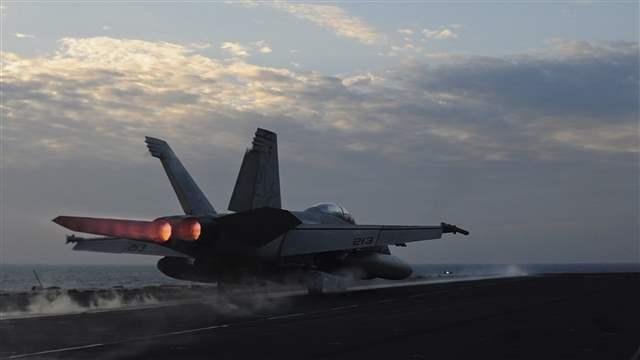
Of course, there is a confounding variable at work here: U.S. air strikes. The U.S. was not providing the Kurds with air support when the Peshmerga were being pushed back by ISIS, now they are and the ISIS advance seems to have been halted (and the Kurds are even advancing). So that might be the explanation instead.
And it is almost certainly the case that U.S. airstrikes were also part of what brought ISIS to a halt. American air power provided an important morale boost to the Peshmerga (on top of the morale boost they got from defending their capital). It has probably forced ISIS to disperse its forces more and so hindered their ability to concentrate for an attack. And it may have taken out some key heavy weapons that had played a role in the earlier ISIS victories. So U.S. air power probably played a role too, but we just can’t know whether it was more or less important in bringing ISIS to a halt than the other three factors listed above.
At this point, one thing that would be useful to know is what the U.S. military’s assessment of the situation on the ground was on Thursday, when the President decided to intervene. We know that the U.S. military thought it was serious—serious enough to convince a very reluctant president that he needed to intervene. But that still leaves a lot of room for speculation. General Dempsey might have told the President, “Mr. President, we believe that the Kurds probably can hold Erbil, but if you want to be certain, you should commit U.S. air support.” Or he might have said, “Mr. President, we do not believe that the Kurds can hold Erbil without U.S. air support.” Both statements could have tipped President Obama’s thinking, but they convey very different assessments of the military balance between ISIS and the Peshmerga.
Problems with the Peshmerga
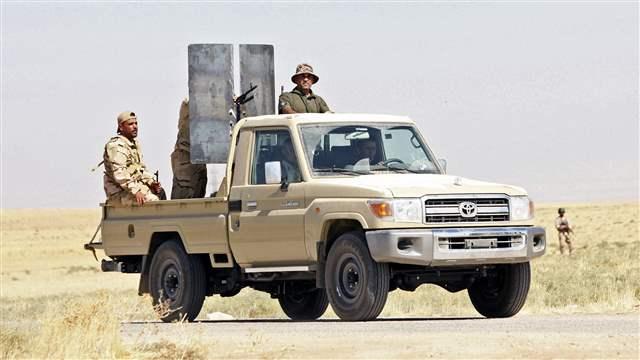
Even with all that said, there are still reasons to be concerned about Kurdish military capabilities. The reputation of the Peshmerga was earned in their long wars against the Iraqi armed forces in the 1960s, ‘70s and ‘80s. In fact, the Kurds fought the Iraqi military for twenty of the thirty years between 1961 and 1991. They have not fought the Iraqi military since 1991, and they have not fought a war of any kind since 1996. And in 1996, they were fighting each other—it was a civil war between the Peshmerga of the PUK and those of the KDP. So it has been 18-23 years since the Pesh have been involved in combat operations.
During that time, a lot has changed. First, and inevitably, the Peshmerga lost a great many of the combat veterans forged during those decades of war. Second, they have not been replaced by the same kinds of recruits. Since 1991, there has been a major shift in Kurdish demographics with large numbers moving down out of the mountains and into the big cities of Erbil, Sulaymaniyyah, Dohuk and Kirkuk. Fewer and fewer of the new recruits taken in by the Peshmerga are the tough mountain boys born with a rifle in their hands. In recent years, the average Peshmerga recruit is an urban youth not terribly different from young city-dwellers across the world and across the region, more likely to have played “Call of Duty” than to have hunted or fired an actual weapon in anger.
Third, the Peshmerga have become much more of a garrison/checkpoint army than they were in the past. Since the 1990s, the greatest adversary of most Peshmerga units has been boredom as they manned the long front lines facing Iraq (as well as Syria and Iran). American military personnel who have worked with the Peshmerga in recent years have uniformly felt that the Peshmerga were more capable and professional than most Iraqi army units, but nevertheless did not believe that the Kurds trained and exercised as regularly as they should have to maintain a fighting edge. Moreover, some at least felt that Peshmerga doctrine had not evolved much since the 1980s when they were slugging it out with a not especially skillful Iraqi military.
Moreover, because the Peshmerga have typically gotten the better of Iraqi security forces in a few small skirmishes dating back to 2008, the Pesh may have been resting on their laurels the last few years, confident that they were more than good enough to beat their most likely foe. In that respect, they were probably unprepared to take on the highly-motivated ISIS troops they were suddenly forced to fight.
Finally, there is the matter of equipment. Given the hodge-podge of weapons fielded by ISIS, I think this the least important Kurdish deficiency, but it is not irrelevant. As I noted above, the Peshmerga are primarily a light infantry force with a relatively small number of tanks, artillery pieces, armored vehicles, and other heavy weapons. Moreover, these are mostly old systems captured from the Iraqi military or supplied by the Iranians during the 1970s and ‘80s. There are well-sourced rumors that in the past 2-3 years the Kurds purchased a number of advanced Russian anti-tank and anti-aircraft weapons from Eastern Europe to be able to take on the M1A1 tanks and F-16 fighters of the Iraqi Security Forces, but these may be in short supply.
Significantly improving Kurdish military capabilities would primarily require a thorough overhaul of Peshmerga doctrine, training and leadership, but they certainly could benefit from considerably more and newer heavy weaponry to increase both their firepower and mobility.
How Good is ISIS?
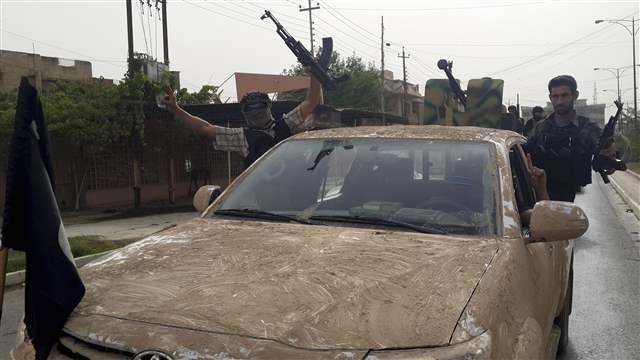
Clearly, ISIS is pretty good, at least by the standards of the Iraqi and Syrian civil wars. But there are a lot of caveats and unknowns here as well.
First off, ISIS is benefitting from all of the different factors that hurt the Kurds during the ISIS offensive last week. Warfare is a zero-sum game: anything that hurts one side helps the other.
Second, ISIS fighters appear to be highly motivated, and that is huge. It is especially important in light infantry combat, and in civil wars where training, leadership and other military skills are often in short supply. In these kinds of fights, higher morale can often prove decisive. ISIS fighters seem very committed to their cause, they appear confident in their abilities, and in part for those reasons, often intimidate their adversaries. It was a similar set of intangibles that enabled the Taliban to overrun Afghanistan in 1994 and easily crush most of the Afghan militias that had been waging their own civil war beforehand.
Thus, these moral factors are critical in circumstances like those of Iraq today.[1] ISIS’s failures demonstrate their importance to its successes. There were a number of reasons that the June ISIS offensive failed to take Baghdad, but one of the most important was the stiffening of Shi’a morale. Once Shi’a troops were defending Baghdad and other majority Shi’a cities—their people and often their families—they found a determination to fight and die that they had lacked, and that ISIS had possessed, when they were fighting for the majority Sunni cities of northern Iraq. In addition, large numbers of Shi’a extremists from militias like Asaib Ahl al-Haq, Khataib Hizballah, Jaysh al-Mahdi, joined the fight and these men were every bit as determined and confident in their own abilities as the ISIS fighters. Thus, once the imbalance in morale was corrected, the ISIS offensive quickly ground to a halt.[2]
As a last point on this issue, in the first 48 hours after President Obama committed U.S. air power to protecting the Yazidis stranded on Jabal Sinjar and halting the ISIS advance on Erbil, the U.S. has not mounted many airstrikes and has not destroyed much ISIS military hardware. A lone artillery piece or mortar here, a lone armored vehicle there, a small convoy somewhere else. That does not sound like a whole lot of military hardware. There has been no mention of platoons of ISIS tanks or batteries of ISIS artillery. That too suggests that ISIS’s principal strength lies in the morale and experience of its troops, not in superior firepower.
Who is Planning the ISIS Assaults?
There is a widespread assumption, including within the U.S. military and the wider U.S. government, that ISIS is benefitting from the experience of a cadre of former Iraqi military officers. The claim here is that the Naqshbandis, which are largely a front for Saddam’s old Ba’th party, have brought with them to their alliance with ISIS a number of Saddam’s former Sunni generals who are planning all of the ISIS operations and that this is why those operations have proven so effective.
Until there is more definitive evidence, I think we should treat this theory with a fair amount of skepticism. It is important to remember that Saddam’s army was itself a mediocrity and most of its officers were useless. As an historian of the modern Iraqi military, I am well aware that between 1987 and 1991, Baghdad put together a small cadre of very capable General Staff officers who planned their successful military campaigns from the Second Battle of Basra in 1987, through the five Iraqi ground offensives of 1988 that won the Iran-Iraq War, to the 1990 invasion of Kuwait and the Iraqi defenses during the 1991 Persian Gulf War.[3]
However, in all of those battles, what Iraq’s General Staff planners got good at was waging corps-level, set-piece conventional campaigns employing massive chemical warfare agents, firepower, and armor to break through and envelop outgunned Iranian (and then Kuwaiti) forces. While that is no small feat, it is categorically different from the kinds of operations that ISIS has been mounting with such success. These have been small (with only hundreds or a few thousands of troops), deft operations that have relied on surprise, superior small unit tactics, high morale, and decentralized tactical decision-making. Particularly with regard to small-unit tactics and decentralized tactical leadership, the Iraqi military was miserable at that kind of warfare, under Saddam, before Saddam and since Saddam. That casts a considerable amount of doubt on the notion that it is former Iraqi army officers who are responsible for these impressive ISIS victories.
Because ISIS has demonstrated skills that the Iraqi armed forces never have, and because they have won their battles by capitalizing on those skills, it seems unlikely that it is former officers from Saddam’s army who have engineered these successful campaigns. It seems more likely that it is homegrown ISIS fighters, planners and commanders who have figured out how to take advantage of what ISIS brings to the table to mount these campaigns.
That would seem to make sense because it is largely what happened with Hizballah. With some Iranian help, but mostly just learning by doing, Hizballah developed a set of skills forged in the heat of battle in Lebanon’s civil war, and then learned to employ them against its adversaries, including the Israeli Defense Force. Over time, they were helped by a Darwinian process of “combat selection” whereby those who did not know what they were doing were killed, and those who did survived. It seems more likely that that is what has happened with ISIS and where its planning prowess has come from.
What Can U.S. Air Power Do?
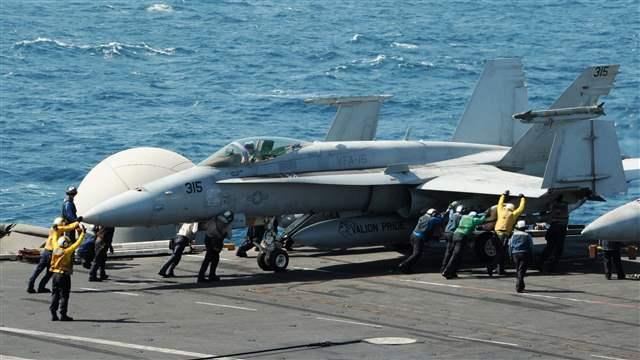
As we have seen already, there is a fair amount that U.S. air power can do. It can bolster the morale of friendly ground forces and hinder the operations of enemy ground forces. It probably can prevent an ISIS conquest of Kurdistan, in large part because the Kurds are not as weak relative to ISIS as their earlier defeats seemed to suggest. Now that the Kurds have recovered from their surprise, properly deployed their heavy weapons, and are fighting for their home territory, the most likely scenario is that they will be able to defend themselves against further ISIS attacks. They might lose territory here or there, but it will be very difficult for ISIS to overwhelm the KRG as it did northwest Iraq, and that is especially true if the Pesh are backed by U.S. air power.
Of course, that begs the question of whether the U.S. is ready to employ U.S. air power to defend all of Kurdistan, and not just Erbil. ISIS’s modus operandi is that when it is thwarted on one axis of advance, it simply turns and attacks in another direction. When it was blocked at Samarra from attacking Baghdad, ISIS turned east into Diyala. When its operations in Diyala bogged down, it turned west to secure the border crossings with Syria and then southeast from Anbar to try to flank Baghdad. When that was blunted, they turned north against Mosul Dam and Erbil. Now that those thrusts have been checked, it seems likely that they will try somewhere else—Dohuk, Khanaqin, Kirkuk, Chamchamal, or elsewhere along the KRG frontlines. Because the Peshmerga are stretched somewhat thin across their 650-mile front, ISIS may be able to find a weak spot and exploit it. Perhaps even to break through and threaten another major Kurdish city. Will the U.S. employ air power to defeat such a new assault? Personally, I hope so, but I don’t think we have heard the President articulate whether he would do so.
Saving the Yazidis
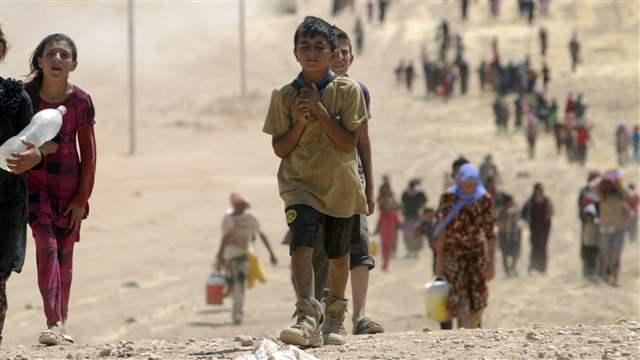
Another important aspect of this question regards the fate of the tens of thousands of Yazidis besieged by ISIS on Jabal Sinjar. There is a very simple problem here: they cannot stay where they are. No one knows how many people are on the mountain and estimates have ranged from 10,000 to 100,000 with most people using the number 40,000 for no apparent reason. Whatever the number is, it is FAR too many to be supplied by air lift for a sustained period. Jabal Sinjar is not Berlin in 1947 (or the Stalingrad pocket in 1942). The United States is not going to deliver round-the-clock air drops of food, water, medicine, tents, sleeping bags, and the vast range of other supplies that such a population would require to survive on a barren mountainside indefinitely.
So they have to leave. That will mean either convincing ISIS to give them safe passage, or sending in a ground force to extract them. U.S. air power can help—and will almost certainly be necessary—for either.
For takfiri zealots like ISIS, the Yazidis are heretics who must be slaughtered. That suggests that it may be difficult to convince ISIS to give them safe passage to Kurdish lines. American airstrikes could be used coercively to convince ISIS that they will suffer too much damage if they insist on trying to kill the Yazidis and so should just let them go.
If ISIS can’t be persuaded to let them go, then someone is going to have to go in and get them. That will require a force on the ground backed by air power. Since Washington and the Europeans are categorically opposed to providing that ground force, it will have to be the Iraqi Army and/or the Peshmerga—or conceivably the Turks—who do so. Any of these forces will require considerable air support, and that can only come from the United States.
Moreover, it could prove to be a fairly demanding mission—certainly more demanding than what has been required so far. Extracting tens of thousands of starving, dehydrated, sick and/or wounded civilians trapped 10-15 miles behind ISIS lines is going to be a big, delicate operation. The extraction force will have to punch through the ISIS defensive positions and secure at least one road to enable the Yazidis to get out—for hours if they can be carried out by convoys of trucks, for days if most have to go by foot. Either way, it will be a major logistical operation, very vulnerable to attack, and therefore requiring U.S. air power to keep the bad guys at bay.
The Limits of U.S. Air Power in Iraq
What U.S. air power cannot do is drive ISIS and the other Sunni militant groups out of northern Iraq without a complementary ground force of some kind. The Obama Administration is absolutely right that the ideal ground force would be a reconstituted Iraqi military working in conjunction with Sunni tribes and other politically-moderate paramilitary forces (and perhaps the Peshmerga as well). But that is only possible if there is dramatic political change in Baghdad, and change that goes well beyond a new prime minister. The events transpiring overnight have further called into question whether we will see such change.
[1] One of Napoleon’s famous maxims was that “in war, the moral is to the physical as three is to one.”
[2] Of course, the shift in morale was not the only factor in bringing the ISIS offensive to a halt—the loss of surprise, the better urban terrain, overstretching ISIS supply lines and a number of other factors probably also contributed to it.
[3] For those interested, see Kenneth M. Pollack, Arabs at War: Military Effectiveness, 1948-1991 (Lincoln, NE: University of Nebraska Press, 2002), pp. 218-266.
The Brookings Institution is committed to quality, independence, and impact.
We are supported by a diverse array of funders. In line with our values and policies, each Brookings publication represents the sole views of its author(s).




Commentary
Iraq: Understanding the ISIS Offensive Against the Kurds
August 11, 2014